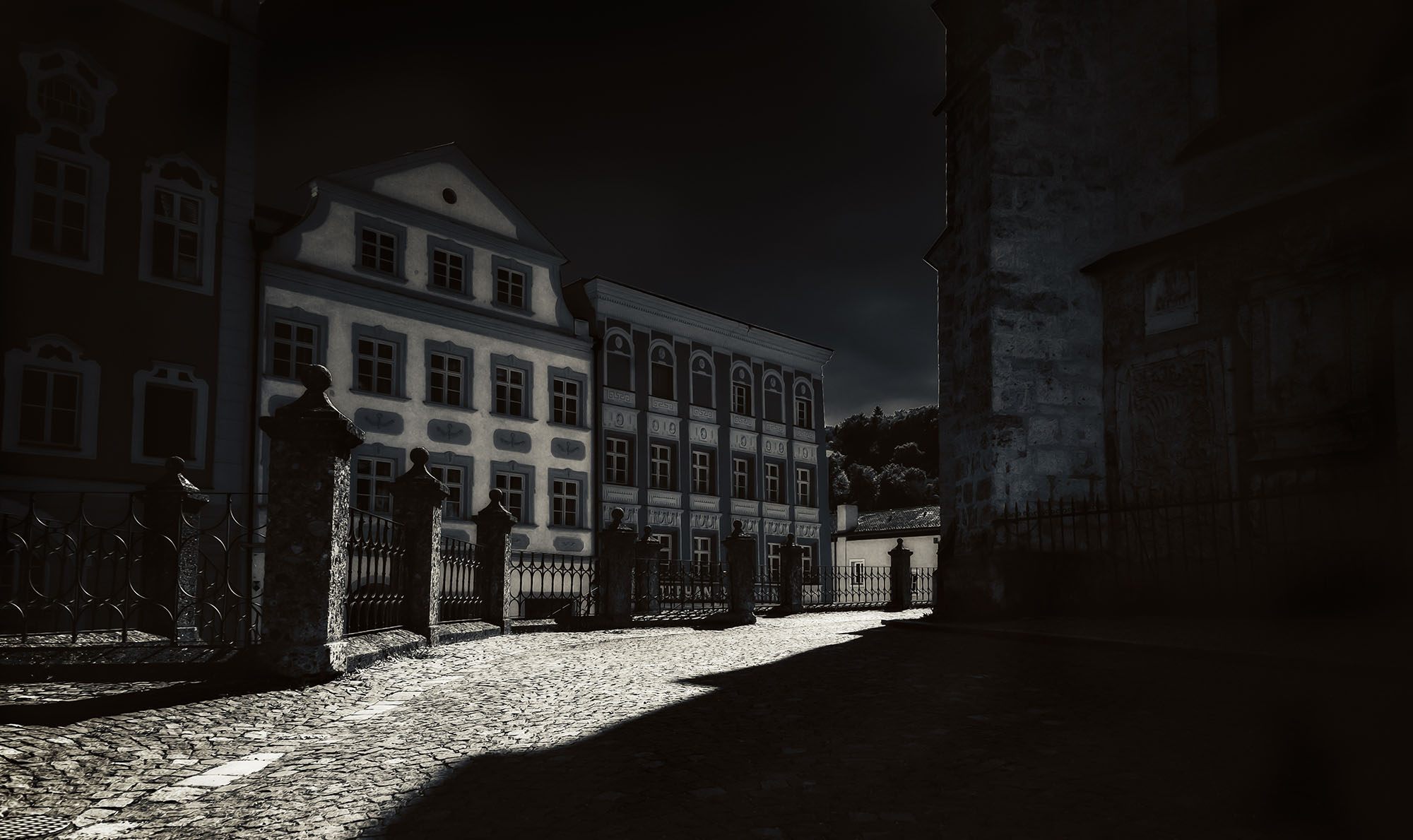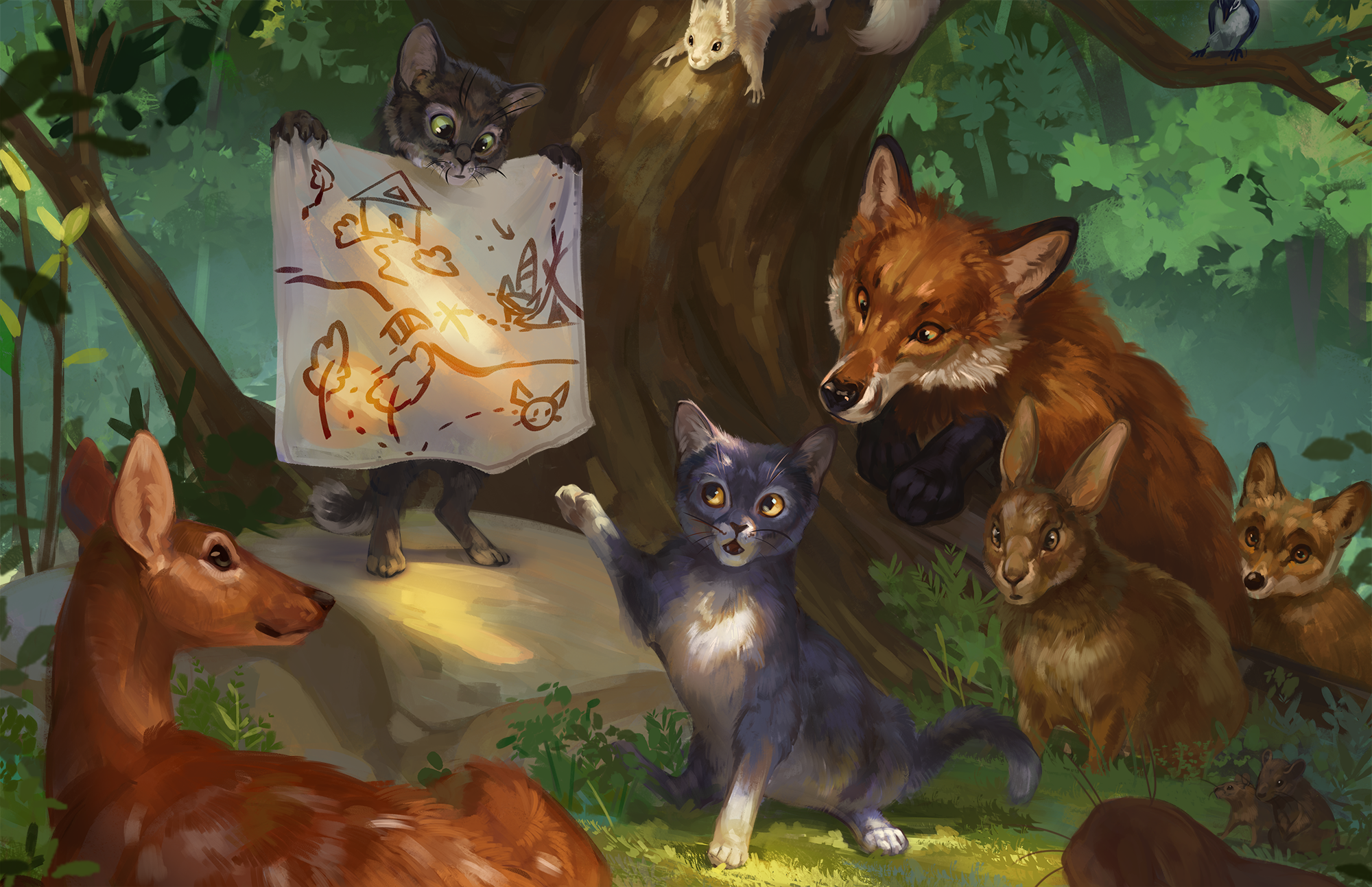DISCUSSING
In the Shadow of the Spire – Session 25B: Blood on the Orrery
The scene they found was gruesome: Bodies were scattered throughout the first two chambers of the bloodwight complex, many in various states of dismemberment. Faeliel’s body was spread-eagled across the orrery itself, dripping blood down upon the silver spheres.
Ranthir, coming upon the scene, eased Faeliel’s body to the ground. With tears welling in his eyes, he turned back to the others with a crack in his voice. “He wouldn’t have wanted the mechanisms damaged… is there anything we can do?”
The bloody fate of House Erthuo’s research team in this session is a good opportunity to spotlight an important part of how I run an RPG campaign, because it’s a fairly unadulterated example of the technique.
Let’s back up a dozen or so sessions: The PCs have discovered and are exploring the Laboratory of the Beast, a dungeon which is part of Ghul’s Labyrinth beneath Ptolus. At this point, neither House Erthuo nor the Surgeon in the Shadows are involved in this scenario. In fact, not even I — as the Dungeon Master — have the slightest inkling that these factions are going to become involved in this scenario. (Let alone that it’s going to end up in this horrific massacre.)
While exploring the dungeon, the PCs discover both a huge, antique orrery (too large for them to move) and a number of chaositech artifacts. Later, after leaving the dungeon, they’re intent on liquidating their loot.
First, they make some inquiries around town and sell some chaositech items. Looking at my campaign notes, I know that there’s an organization of chaositech dealers led by the Surgeon in the Shadows who is going to be part of an upcoming scenario in the campaign. If the PCs are selling chaositech, it’s likely the Surgeon in the Shadows will become aware of it and send an agent to negotiate with the PCs for it.
Second, during a party at Castle Shard in Session 12, Tee tells some of their contacts about the orrery, hoping for a recommendation on someone who might (a) be interested and (b) have the resources to remove the orrery from the dungeon. Looking at my notes for the party, I see that Lady Peliope Erthuo is attending the party. In her background notes, I’ve copied some descriptive text from the Ptolus sourcebook about House Erthuo: “House Erthuo is said to possess one of the finest collections of rare books, antiquities, and artifacts of historical significance in this part of the world.”
At this point I don’t have any particular plans for House Erthuo in the campaign: I’ve included Lady Peliope at the party as one of the incidental guests. (Not every single person the PCs meet in the campaign needs to be an Important Character™.) But she’s obviously a perfect fit for what Tee is looking for and it’s a great vector for prompting the PCs to continue circulating through the event. So Tee’s contact points here in that direction and she makes arrangements with Lady Peliope to meet with Cordelia Erthuo in order to arrange the sale of the orrery.
THE VECTORS ESTABLISHED
At this point, the actions of the PCs have created two vectors in the campaign that did not previously exist.
Now, if you’ve stopped prepping plots and are running situation-based scenarios, you’ll know that this sort of thing happens all the time. But this particular example, as I mentioned, is particularly clear-cut because it’s not only the vectors which didn’t previously exist in either the campaign or the specific scenario of the Laboratory of the Beast, but also the elements of the campaign world which have been pushed into motion.
Moving forward, in Session 14 the PCs met with Cordelia Erthuo and sold her the location of the orrery. This vector is now obviously pointed back into the dungeon, with House Erthuo planning to send a research team to study the orrery. (I make a note in my campaign status document to this effect.)
Later, in Session 21, an agent of the Surgeon in the Shadows called Ribok comes to the Ghostly Minstrel to negotiate with the PCs. By this point, however, the PCs have learned that chaositech is far more dangerous than they had suspected and they have no interest in selling. They turn Ribok away.
Okay, so what’s the vector from this? Well, the Surgeon isn’t going to take “no” for an answer. They’re going to try to figure out where the PCs are getting the chaositech from. How would they do that? Well, the PCs filed a claim for the labyrinth access under Greyson House… the one which leads directly to the Laboratory of the Beast. It’s possible that the Surgeon will be able to discover that… and a skill check indicates that he does.
So I note this down on my campaign status document, too: On the 12th of Kadal, the Surgeon in the Shadows sends a chaositech strike team to Greyson House.
THE VECTORS INTERSECT
These two vectors are now pointing at each other.
Here’s the key thing: I still don’t know exactly how these events will play out, but if nothing disturbs these vectors it’s clear that they’re going to intersect and I have a pretty good idea what will happen when they do. So I now have the following entries in my campaign status document:
09/12/790: Surgeon in the Shadows sends a chaositech strike team to Greyson House, they end up killing House Erthuo’s team that’s examining the orrery.
09/13/790: House Erthuo investigates the disappearance of their research team and finds their workers dead. Cordelia contacts the PCs.
09/14/790: The Surgeon’s team leaves the Ghul’s Labyrinth complex with the chaositech artifacts from the temple; they also have discovered the mind-transference device.
What would happen next? Well, I have an inkling. (Ribok’s team couldn’t remove the mind-transference device, but they’re definitely interested in it. So they’ll be coming back – possibly in greater numbers? – to investigate it. Perhaps they’ll even dismantle it and take it back to the Surgeon in Shadows’ laboratory.) But I didn’t spend any time prepping this material or writing it down, because it existed beyond the event horizon: It was overwhelmingly likely that the PCs will have interacted with these elements of the campaign world before that happened (which, in fact, they did), with no way of anticipating how they would affect the vectors in play.
THE VECTORS IN PLAY
And, of course, we’ve now seen how this worked out in actual play: By pure happenstance, the PCs were actually in the dungeon when the Surgeon’s team showed up, creating the fantastic drama of seeing the House Erthuo team only a few short minutes before they were killed.
Could I have forced that outcome? Possibly. (Although I hadn’t actually thought of it until it occurred during play.)
Could I have instead forced the outcome from the undisturbed vectors described above? Certainly. (I could have just delayed Ribok’s arrival until after the PCs left the dungeon again.)
But the point, of course, is that we’re not predetermining the outcome. We’re discovering the outcome through play. And there are any number of other outcomes that could have happened that didn’t. (For just one example, Ranthir could have become fascinated by the discoveries of the House Erthuo team and decided to stay with them while everyone else explored the dungeon. What would have happened if he’d been present when Ribok arrived? I have no idea!)
Looking at just these two vectors in isolation is deceptive anyway: The campaign is actually filled with lots of these vectors (and, as we’ve just seen, the PCs can create new vectors at any time). There’s no way to know how these vectors will actually develop until it happens at the table.
Here’s another way of looking at this: If I had been predetermining events, I would never have set up these vectors in the first place – they were not, after all, part of my prep for the Laboratory of the Beast – and none of this would have happened.
This is what I mean by active play. When the PCs take an action, I think about how the elements of the campaign world are going to react to those actions. Some of those reactions will be direct and immediate (their vectors will immediately intersect the PCs). Others form vectors that I sort of let loose in the campaign world until they intersect with either another vector or the PCs themselves.
(Some of these vectors will end up never intersecting with anything. Or, at least, nothing that is part of the campaign. That’s okay. Sometimes you’re done playing with a toy and you don’t need to pick it up again.)
Of course, not all vectors originate from the PCs. When I create an NPC or faction in the campaign world, they’ll also have proactive vectors determined by their agendas.
NEXT:
Campaign Journal: Session 26A – Running the Campaign: Urban Splits
In the Shadow of the Spire: Index
















